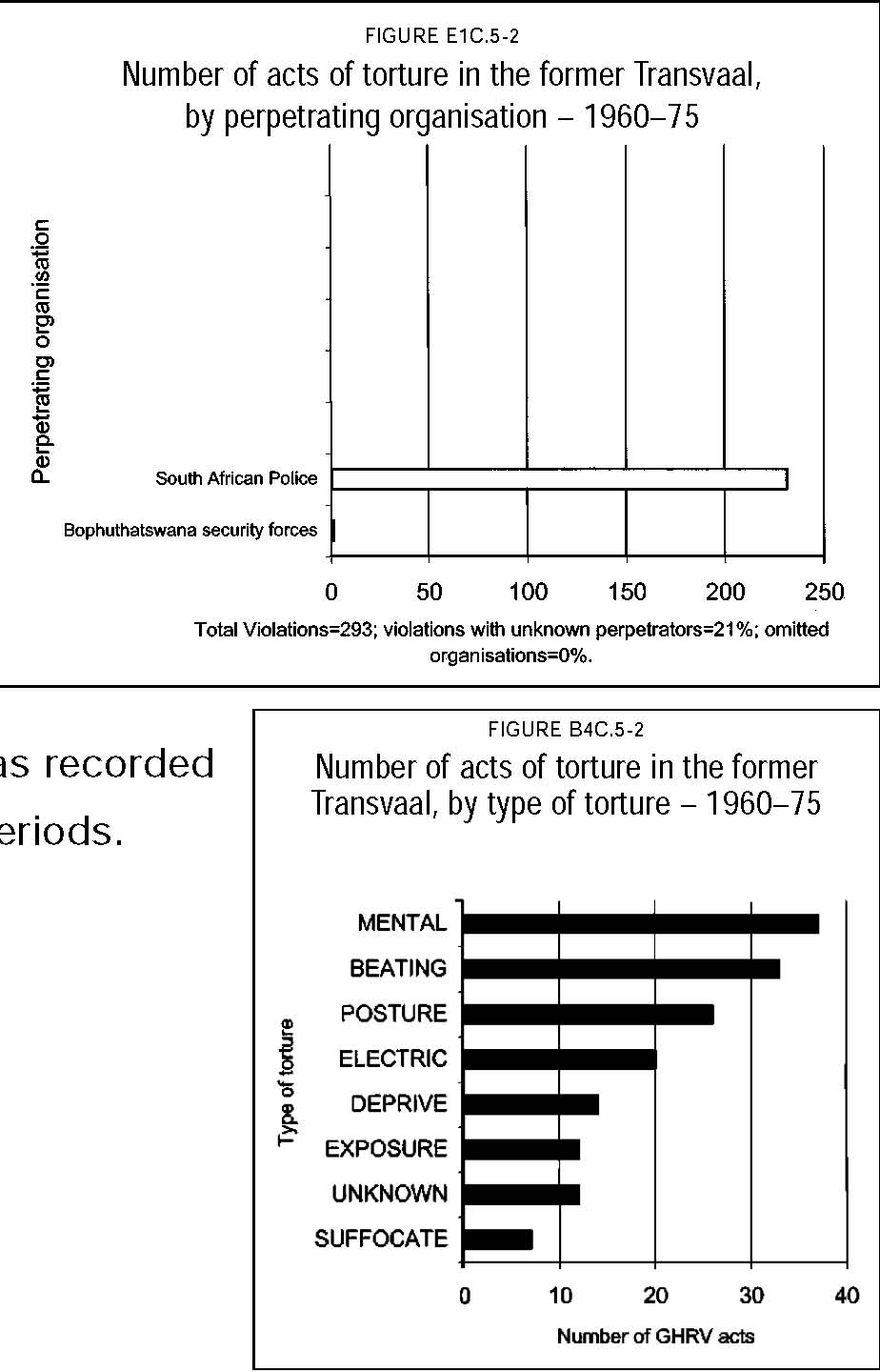 |
News | Sport | TV | Radio | Education | TV Licenses | Contact Us |
 |
News | Sport | TV | Radio | Education | TV Licenses | Contact Us |
TRC Final ReportPage Number (Original) 531 Paragraph Numbers 16 to 21 Volume 3 Chapter 6 Subsection 3 Detention and torture16 Evidence before the Commission showed that the introduction of detention without trial in 1963 created the context for the systematic use of torture. Most reports of torture for this period emanated from the Johannesburg and Pretoria areas where the security police headquarters and the John Vorster Square police station were situated. Activists from around the country were brought to these centres for detention and interrogation. 17 The incidence of torture in detention increased markedly at the time of the launch of the armed campaigns of the ANC, PAC and the African Resistance Movement (ARM). Detentions peaked in 1963 with the raid on the ANC headquarters at Liliesleaf farm and with large-scale arrests of members of the PAC’s armed wing, Poqo. 18 Assault and torture in detention led increasingly to deaths in custody. The Johannesburg office of the Commission received statements from the relatives of the first person to die in detention in 1963, Mr Looksmart Ngudle [EC0127/96CCK], who was held under the ninety-day detention law. In 1965, further legislation extended the period a detainee could be held incommunicado to 180 days. 19 In 1967, the Terrorism Act was introduced, providing for indefinite detention without trial. Soon after the introduction of this legislation, a spate of deaths in detention occurred. The Commission received statements from the families of three of the people who died while being held under this legislation. In these cases, official explanations included suicide by hanging, “slipped on a bar of soap” and “jumped from the tenth floor of John Vorster Square”. While forensic evidence indicated torture and assault in these cases, inquest reports found no one responsible for the deaths. 20 During this period, the only significant perpetrators of torture were the South African Police (SAP). 21 Victims of torture in this period told the Commission of the use of electric shocks, suffocation with a bag over the head and severe beating. A breakdown of the recorded types of torture reveals the difference between this period, when mental torture was recorded as the form most used, and later periods. 
|